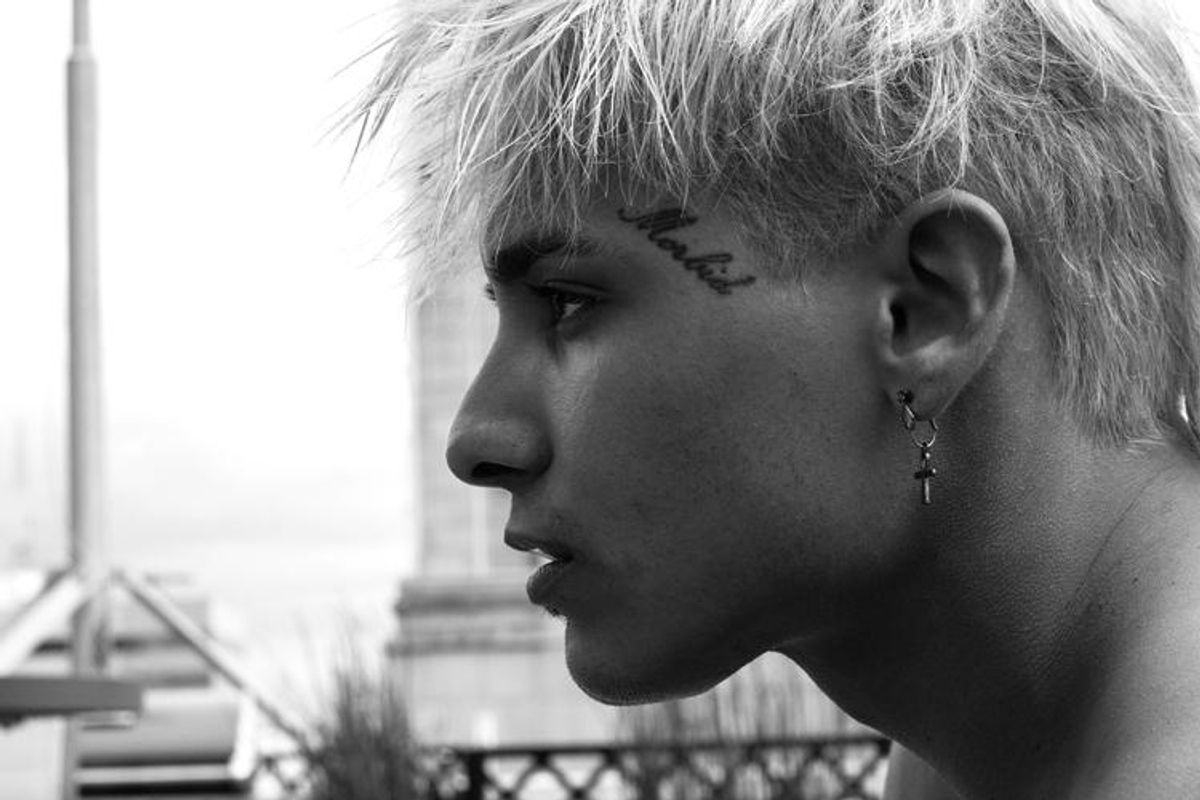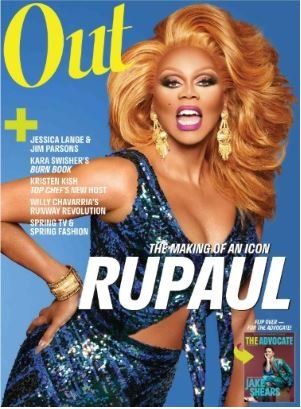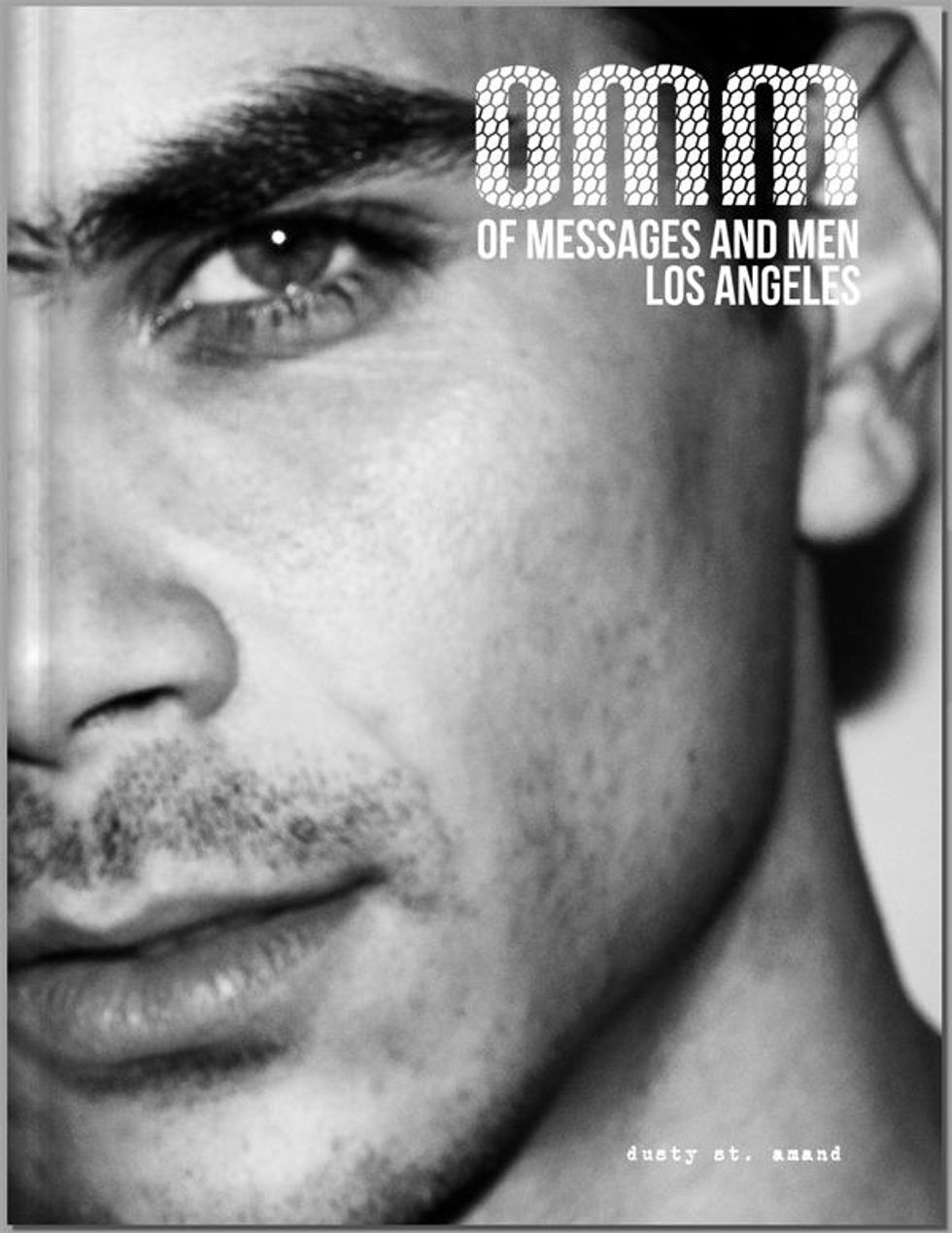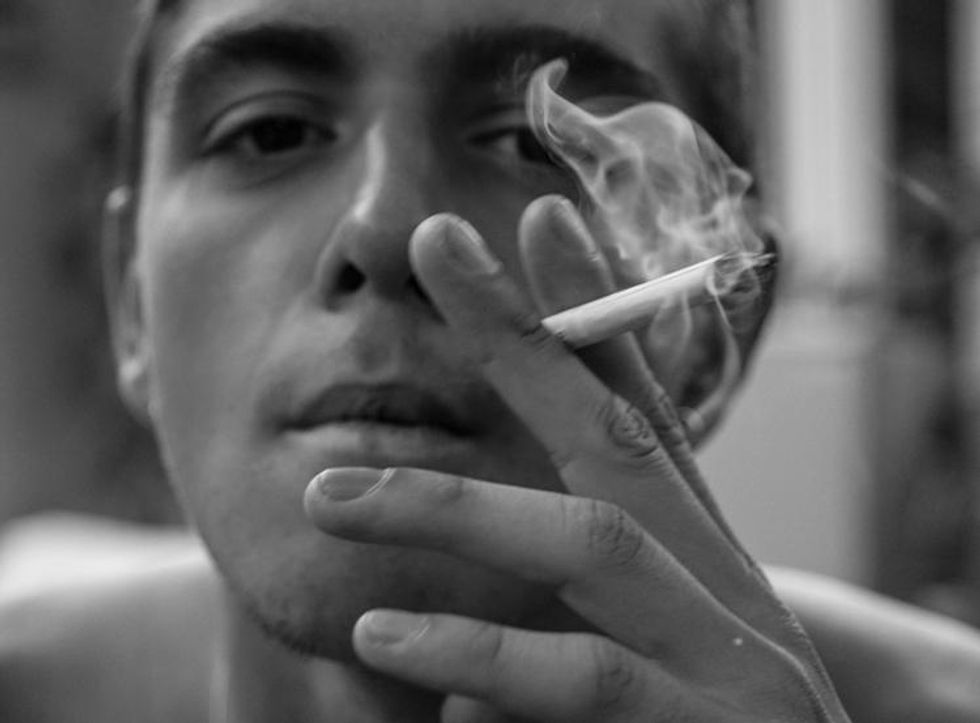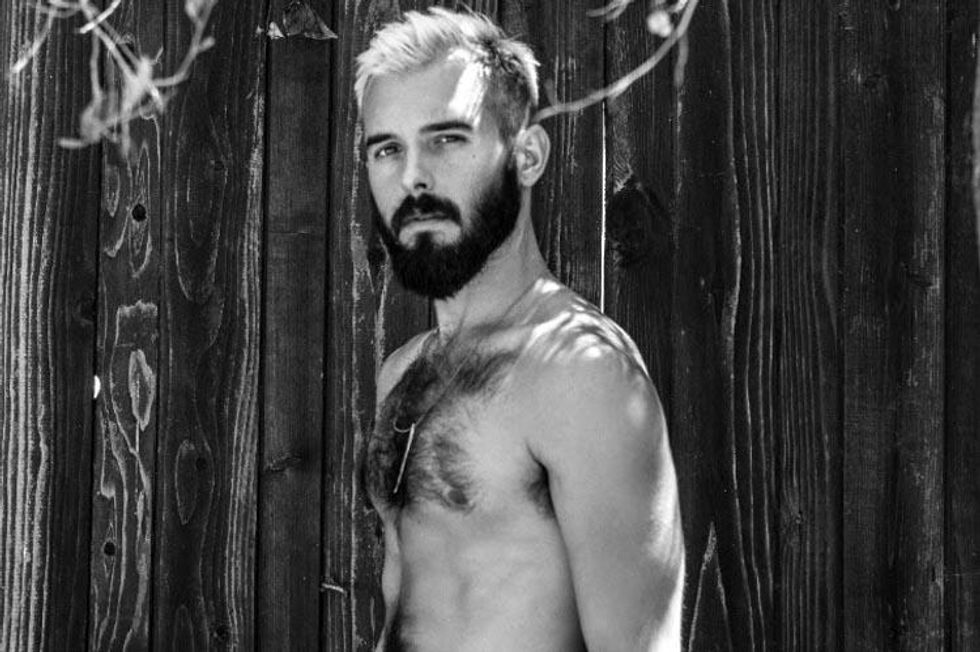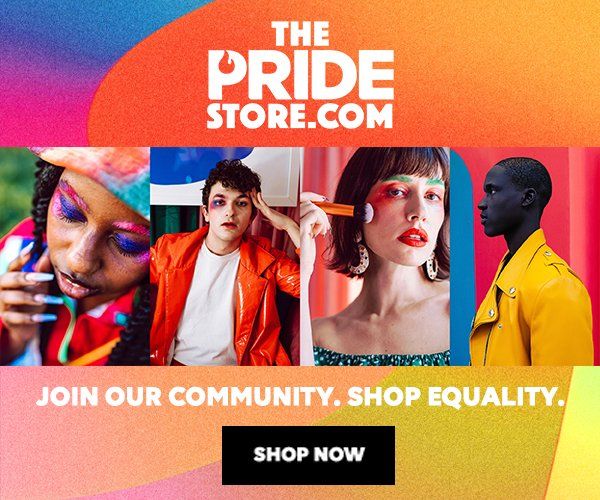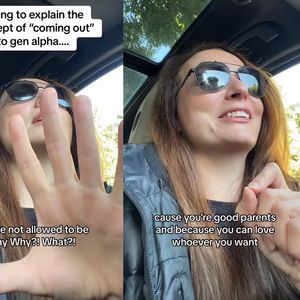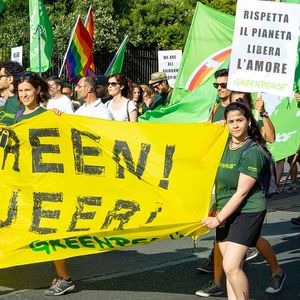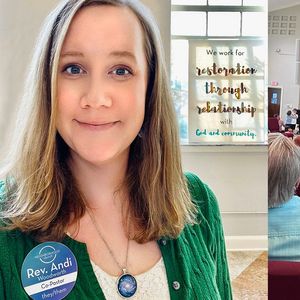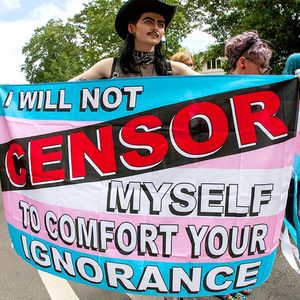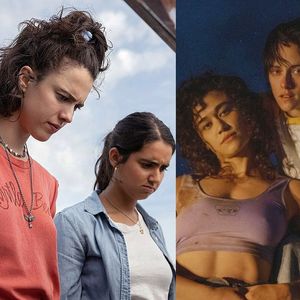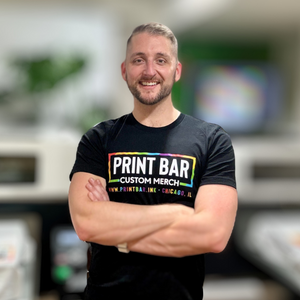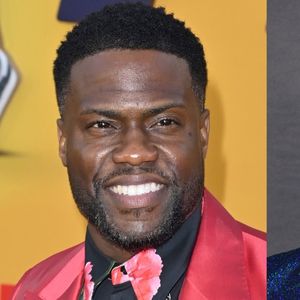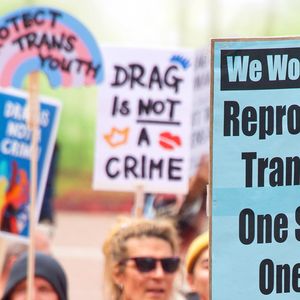Photographer, provocateur, and Out contributor Dusty St. Amand has made his mark on the world of social media, publicizing a brazen, yet artful, perspective on both gay sex and the beauty of the male form. Known by his friends, fans, and followers as @dusterz (an Instagram account that was recently deleted for arguably undue purposes), St. Amand has breathlessly relaunched his brand as @dusterzdeux, slowly but surely rebuilding his online gallery of work. Concurrently, he's also published his first photo book, Of Messages and Men: Los Angeles, a magazine-style collection of pictures and text that, according to him, "offers glimpses of queer intimacy in a fast food sex culture, in which technology is abundant and tenderness rare."
To celebrate the book's release, St. Amand will be hosting a launch party in New York this Friday, packing the space of La Mama Galleria on 47 Great Jones Street from 7 to 9 p.m. In advance of the event, and in the wake of his book's publication, we caught up with St. Amand to discuss connection, disconnection, self-promotion, and sex.
Out: The issue of social media (and all electronic communication) being something that brings us together and keeps us apart has been debated for years. With Of Messages and Men: Los Angeles (OMM), what new or unique perspectives do you think you're bringing to that discussion? Is it simply about sharing your experiences amid it all?
Dusty St. Amand: I've had a lot of really frustrating moments over the past year. Eyes glued to my phone. Hand aching from the weight of it, the case. Real flesh and blood humans surrounding me, watching me engage with this device with more vigor than I was applying to them or to present scenarios. Moments in which I realized that so much of the intimacy and connection that I felt was missing in my real life was actually being propelled further and further out of my reach because of my commitment to digital relationships and personal branding through social media. OMM is that bridged moment where technology and tenderness actually commingle. In OMM, I'm attempting to record moments or expressions that genuinely felt warm, despite the technology (the phone) that got them to me (with more technology--the camera).

As your collaborators and audience know, Instagram has thus far been your primary medium for sharing your work with the world. Now, you've opted to create a printed, tactile book with photographs that people can actually hold and touch. Tell me why you did it, and why, in an age when it's never been less cherished, you value the printed photograph.
The Internet is just a sea of images. We're drowning in pictures. And like we'd bail water in a desperate time, we swipe past these pictures so quickly, only absorbing fractions of them, regardless of what their maker meant to project. I wanted to create something that could offer a little more reverence and little less frantic clicking, swiping, and window-shopping. Something you could quietly sit with and think about. I'm incredibly thankful not only for the exposure Instagram has given my work, but for the platform it has provided me to receive feedback and support as I educate myself or "practice" my form.
Anyone who explores Instagram can attest that there are countless photographers, professional and amateur, who are creating work that's at least thematically similar to yours--posting photos of barely clothed men and, as a result, likely gaining substantial followers and attention. Tell me, in your own words, how you feel your art stands out from the pack.
Maybe this isn't the most promising advice for anyone who follows and enjoys my photo work, but I don't ultimately care about being a photographer. I care about extending visibility to people and experiences that I feel are under-represented and not really respected in the realms of both conglomerate and user-generated media. Photos are how I currently choose to do that. In my daily life, I use words. In the future, I'll use video and combinations of dance, fashion, vocal music, etc. Comparison is the thief of joy, so I won't put myself next to someone else and try to discredit their expression or experience. But, what I do feel that makes my images stand out is that I generally document the person in front of me, instead of shaping them into something they're not. I'm not looking to create powerful fashion brand-interaction or sell you some surreal depictions of male physical fitness. My subjects can remain at ease knowing I brought them there to be themselves. I think that chill vibe reads in my work.
There was a time, particularly in the lead-up to the AIDS crisis, when gay men--all of them denied the basic rights of heterosexuals--had virtually nothing with which to define themselves beyond sex and their carnal impulses. Today, we live in a post-gay America in which we've gained those rights, and many of us frown upon overt sexuality--as if it's setting us back or diminishing our hetero assimilation. Tell me why you think it's crucial to be sex-positive and to promote gay sex, and tell me how you feel when you do it through your work.
The level of gratitude and relief I feel because of figures like Neil Patrick Harris and Jesse Tyler Ferguson is immense. They are providing us with this symbols of approachable homosexuality in mainstream media, essentially putting a big, welcoming smile on the face of what was once, and still is to some, a scary taboo. These figures, along with cute, gay, couple-driven Instagram accounts where life is depicted as an eternal birthday brunch, and the growing number of gay-friendly commercials created by major brands, are powerful. But where they falter, or where their responsibilities seem to cease, is when it comes to depicting references of sexual normalcy. We've got the imagery that tells us that people identifying under the queer umbrella adopting kids and fitting in is all doable, but where is queer sexuality being depicted? Without obscenity or humor attached, where do we have calm (maybe mundane) references for people who feel insane in their inclinations to look to? I feel like my photo work, and hopefully whatever media or moods I create in the future, will offer moments of easy and seemingly "normal" queer sexuality. I want it to seem okay.

You're an exhibitionist. You've shot so many subjects, but you are clearly one of your favorite subjects, too. Give me your thoughts on how vanity and the presentation of oneself lend themselves to personal branding; tell me what you gain from your exhibitionism; and tell me about any of its negative effects.
My digital self tends to be a projection of what I wish to be, or of what I think people need to see. Offering my image is helpful for those who see themselves in me. Digital It-boys were who I modeled myself after when I felt like I had no voice in the world. I found myself in them. And "the game" is not lost on me. I know what people want to see and click. They want coy faces, and trim bodies, and images of lives that seem better than theirs. Scrolling through staged images of sexuality and day-to-day life is this masochistic thing we all do to ourselves to escape reality. I wanted people to interact with my media, so I drew them in with the obvious. And hopefully delivered so much more once they were in. The negative effects? I have to reconcile "Dusterz" (the digital persona) with Dusty. People come up to me in public and feel like they're talking to that sexually-charged digital character, when in fact I'm just a silly dude who doesn't always want to entertain your touch or glance. I get that I've set myself up for the attention, but I don't always know how to deal with it.
Censorship is an ongoing hot-button topic in our culture, and recently, your entire Instagram gallery--a complete digital portfolio of an artist's work--was deleted. Permanently. Tell me how you felt when that happened, what changed, and how it motivated you to rebuild and expand your brand.
I felt like Jekyll and Hyde were living in the same house. My personal expression of sexuality/means of advertisement was valid in its own way, but was casting a shadow on the nuance of my photography work. I feel great relief being free of the old gallery, as I don't feel the need to depict myself in any sort of way or stage things just for the Instagram platform. Despite feeling that my deletion, in comparison to the non-deletion of racier accounts, does nothing to protect the "safety" of other users, I am happy it's gone. Now I post what I want--nature, my work, random still life stuff--when I want. Censor me all you want; I'll just transcend to newer, broader, and more open-minded outlets.
OMM: LA is an ode to the messages and men of a particular city, just as the follow-up book, which you've alluded to, will be an ode to another. That narrows your playing field, but still, how does one curate so many images and whittle them down to fill a book with only 60 pages? What was your key criteria for images that made the cut?
I'm just going to travel and shoot the men who come into my life. When it feels like I've amassed an impressive collection of images, I'll start to chip away at it and see how they all work together. While OMM can definitely be a multi-city project, I'm in no rush to follow this first book with a hasty second. I want to let this one resonate for a minute.
The messages and men in the book are those that have, respectively, been sent to you and been in contact with you. There's a stigma, or a presumption, that gay men who photograph other gay men are having sex with all of them. If you had to come up with a ratio in regard to the men you've shot, how would the number you've slept with compare to the number you haven't?
I have not slept with the majority of the men I have photographed. I have had some sort of attraction to all of them and I think that comes through in my image selection and the way I finish them in post. My camera has been present in many situations that were not professional photo shoots. I just snap during hangouts. I snap during sex. I snap during meals. And in that honest documentation lays my work. OMM definitely calls out the fact that sometimes the photographer does sleep with the subject, and that it's not a moment of victimization. The camera and the string of compliments it takes to get a solid posture out of unknowingly beautiful men can be overwhelming. Sometimes putting the camera down feels more than right.
You're a hustler (in the professional sense), you work hard, and you're consumed by what you create. Though many would say we've slowly moved past the era of millenial lethargy, many would also say you're an anomaly of your generation, which has been stereotyped as one of people who expect life's rewards to be handed to them. What motivates you to be industrious, and what gets you through times of professional doubt?
Not to dig up some age-old sob story, but I grew up pretty poor. I was one of seven kids, being bounced through custody constantly. I've just never had much to call my own, and no next meal ever promised to me. The way I intensely create work is how I've approached all work since moving out at age 17. I work myself to a place of exhaustion because it momentarily covers my bases and provides me with quick bits of calm. I always know that if I keep on trucking, something will work out.
When you present a photograph to the world, one of a beautiful man that you've carefully captured, retouched, and refined to reflect your signature style, what do you hope the viewer feels when he or she sees it?
I want people to feel beautiful. And to feel that, like hunger, their sexuality is natural, valid, and worth exploring.

At the book launch party on December 4 at La Mama Galleria, there will be 50 copies available for sale and signing but there will be a team on site to help you purchase the book online during the party. Of Messages and Men: Los Angeles can be purchased online HERE.
Visit Dusty St. Amand's website at www.suchdustyphotos.com, and follow him on Instagram at @dusterzdeux.
